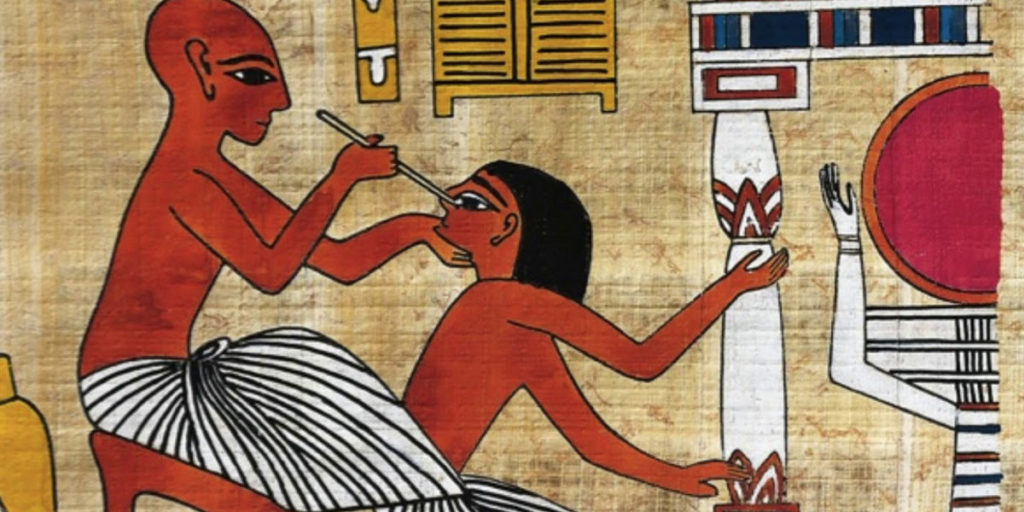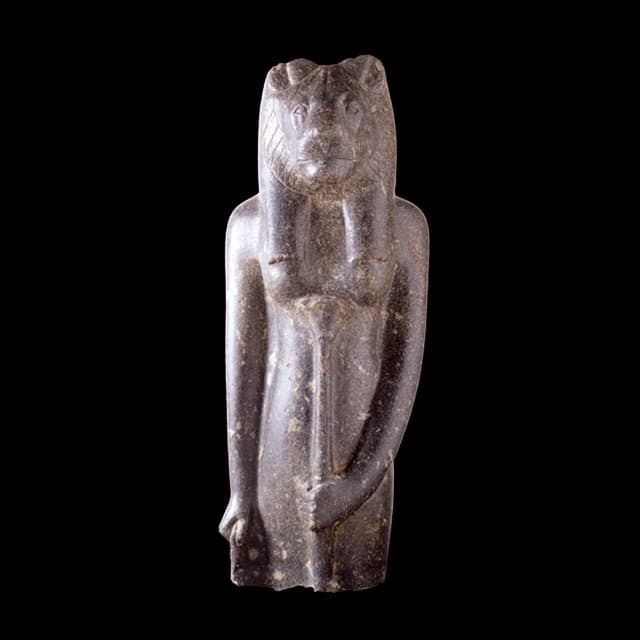The Eye of Horus is an ancient Egyptian symbol used for protection and good health. It was a popular symbol in the Old Kingdom, also called the Age of the Pyramids, and ever after.
Still a popular symbol today, the Eye of Horus has endured for five thousand years.
Horus was the god of the sky. He was depicted as either a falcon – which was also his name in hieroglyphs – or a man with the head of a falcon. He was one of the most important deities of ancient Egypt.
The name Horus came late, influenced by Greek mythology. Earlier forms of the name include Har, Heru, and Hor. In addition to ruling over the sky, he was associated with healing, protection, kingship, and the sun.
The worship of Horus began in prehistoric Egypt sometime before 3000 BC. He was most commonly said to be the son of Osiris and Isis, the divine mother goddess. Osiris was the god of fertility and resurrection.
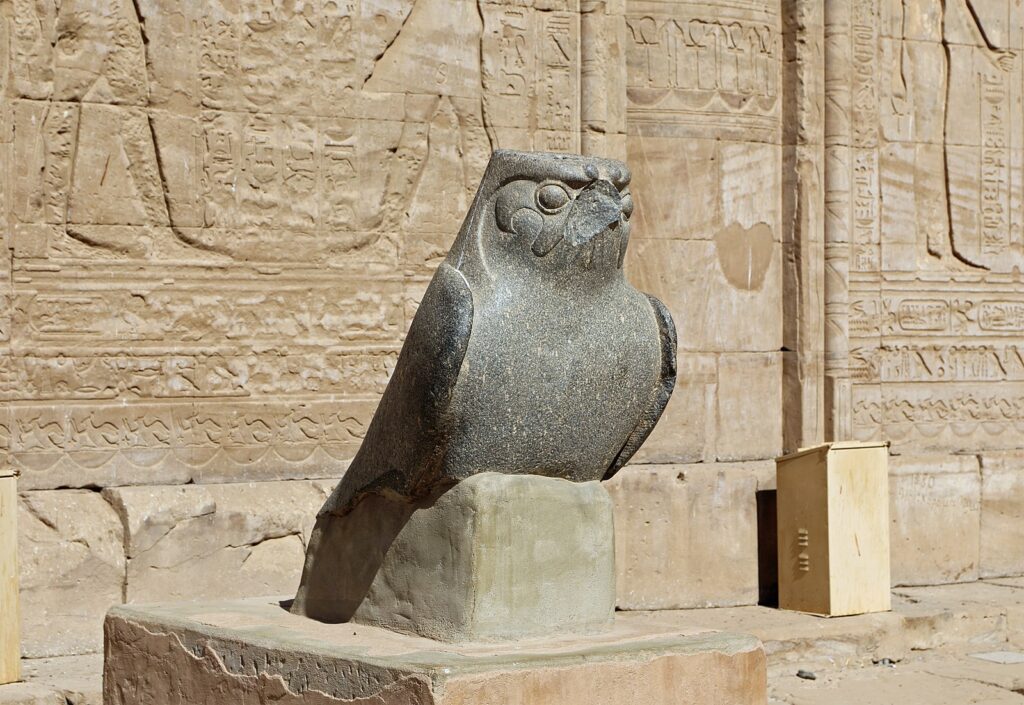
The Story of the God Horus
In the myth of Osiris, he was both the god and king of Egypt, descended from Ra, creator of the world. Osiris was killed by his brother Set, the god of chaos and violence.
In early versions, Osiris was locked in a chest (the first sarcophagus) by Set and drowned in the Nile. In later versions of the myth, Set cut his brother’s body to pieces and scattered them across the land.
For a time, Set ruled as the new king. But his sisters were busy seeking to restore Osiris. Isis and her sister took the form of falcons to find the body of Osiris.
With the help of other gods, they mummified his remains. They restored him to life long enough for Isis to conceive Horus, his son and heir.
Isis spent years in exile, hiding her infant son from Set. Throughout his childhood, Horus was besieged by snakes and scorpions sent by his uncle, bitten and stung but healed by his mother.
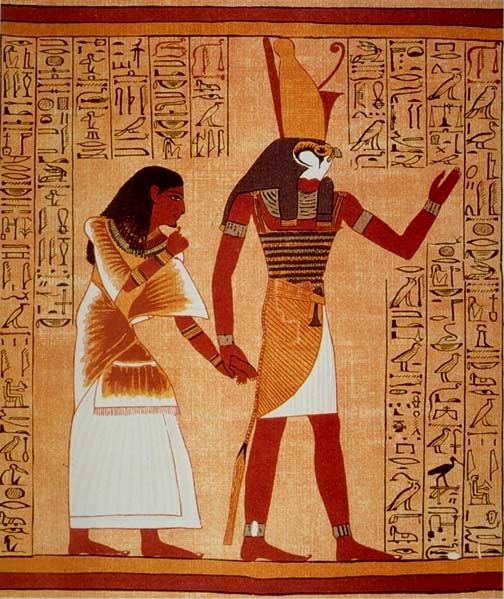
Once grown, Horus competed against his uncle for decades in ritual trials witnessed by the other gods. A grand jury made up of the creator god, the god of wisdom, and the god of air watched to judge which of them was the rightful king.
In some of these conflicts, Set tore out one or both of Horus’s eyes. This may have represented eclipses because one of Horus’s eyes represented the sun and the other represented the moon. Each time this happened, Horus had to reclaim his eyes from Set.
In one story, Set stole Horus’s eye while he slept and divided it into six pieces. The god Thoth found them and pieced them back together, but he had only five.
He replaced the sixth piece with a divine fragment that allowed Horus to see beyond what is visible to the ordinary eye. Thus, creating the fabled Eye of Horus.
In the end, Horus ruled over the fertile lands along the Nile. Set was banished to the barren desert beyond. An annual Egyptian festival celebrated the victory of Horus over Set.
Horus often made offerings to his father Osiris. Once resurrected, Osiris ruled over the afterlife but still needed offerings to sustain him.
One of the most important things that Horus offered his father was his own eye, which Osiris then consumed. The eye had great restorative power that both restored Osiris to well-being and protected him from harm.
Representations of the Eye of Horus Throughout History
The Eye of Horus is usually drawn almond-shaped, like a human eye, with a huge black circle in the middle like the eye of a falcon. A thick line is drawn straight down from the center of the eye.
Another curves from the same spot and across the cheek towards the ear, usually ending in a curl or a spiral. Another line extends sideways from the outer corner of the eye.
The eye is usually accompanied by a thick, curving eyebrow. Shaved eyebrows in Egypt were often a ritual sign of mourning, so the inclusion of the eyebrow was an important feature in this protective talisman.
People have been making and wearing amulets inscribed with the Eye of Horus for over four thousand years. In the Old Kingdom, they were worn by mummies to their final resting place.
In ancient Egypt, these amulets were made out of a wide variety of materials: quartz, ceramics, glass, gold, and colorful stones such as lapis lazuli.
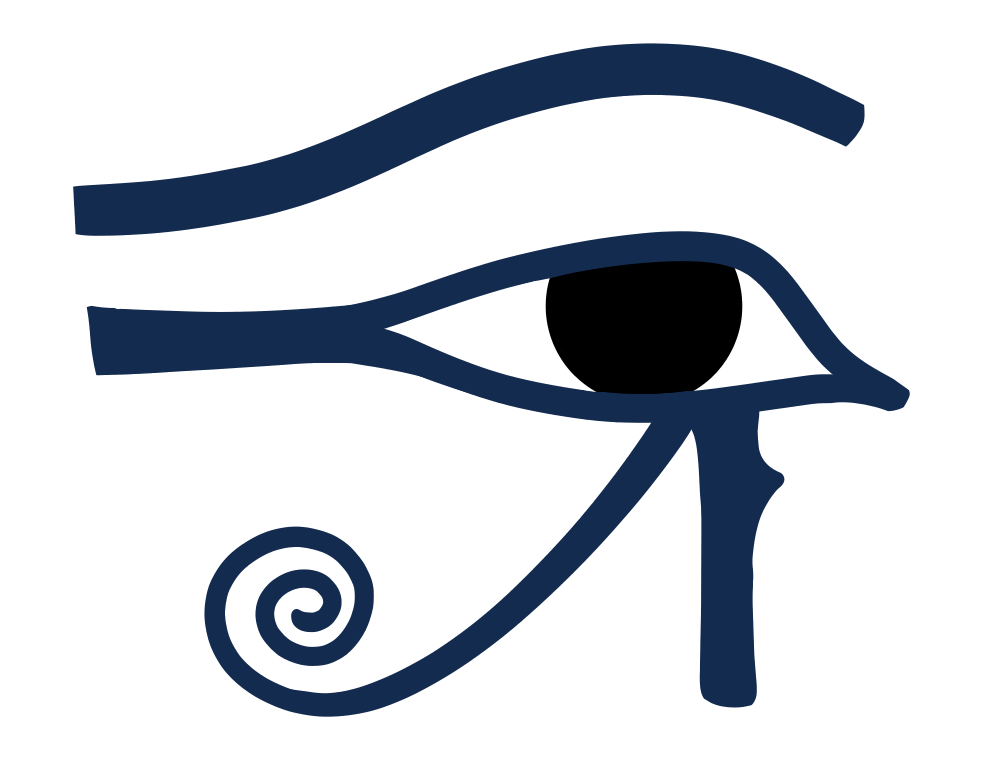
Eye of Horus amulets became increasingly complex in New Kingdom Egypt (1550 to 1077 BC). Rearing cobras were often added in front of the eye, with a bird or feathers behind.
Human or feline body parts were sometimes used for the lower lines. In the Third Intermediate Period (1070–664 BC) other animals and even gods were incorporated into the designs.
In addition to lasting amulets made with precious materials, temporary amulets were often drawn on papyrus or linen for protection in times of illness or during childbirth. This stylized eye came to represent any and all sustenance offered to the gods.
Ancient Egyptians also made offerings to the deceased during various monthly rituals. These coincided with the waxing of the moon, which symbolized the healing of the Eye of Horus.
Ritualistic Uses of the Eye of Horus
The Eye of Horus was often used in healing rituals, which in ancient Egypt were a fundamental part of the practice of medicine. Ritual and practical treatments were woven together as part of the same fabric.
Horus eyes were often painted on coffins in ancient Egypt. In the Middle Period, they were painted on the side of the coffin in the same direction that the mummy was facing. They were both protecting the deceased person and allowing them to see out the side.
They were also painted on or carved into the bows of ships to invoke the god Horus’s protection on voyages and help the ship see the way forward.
In the New Kingdom, the Eye of Horus was adopted by some as a tattoo. The Eye of Horus was still a common symbol throughout the Roman occupation of Egypt, which lasted until 641 AD.
Neighboring regions, including Nubia, Syria, and Canaan, also adopted the protective symbol. They are the most likely origin of the modern eye bead, or nazar, that is still popular today.
These blue glass eyes are used throughout the Middle East and the Mediterranean to shield their wearers from evil.
